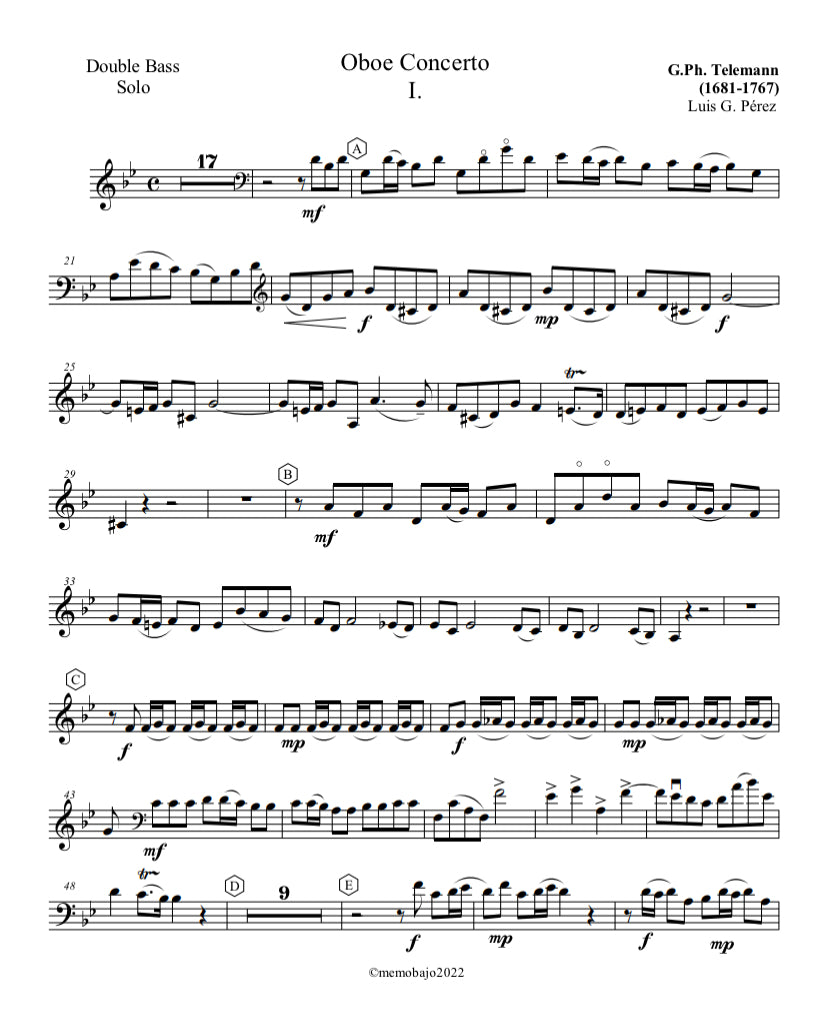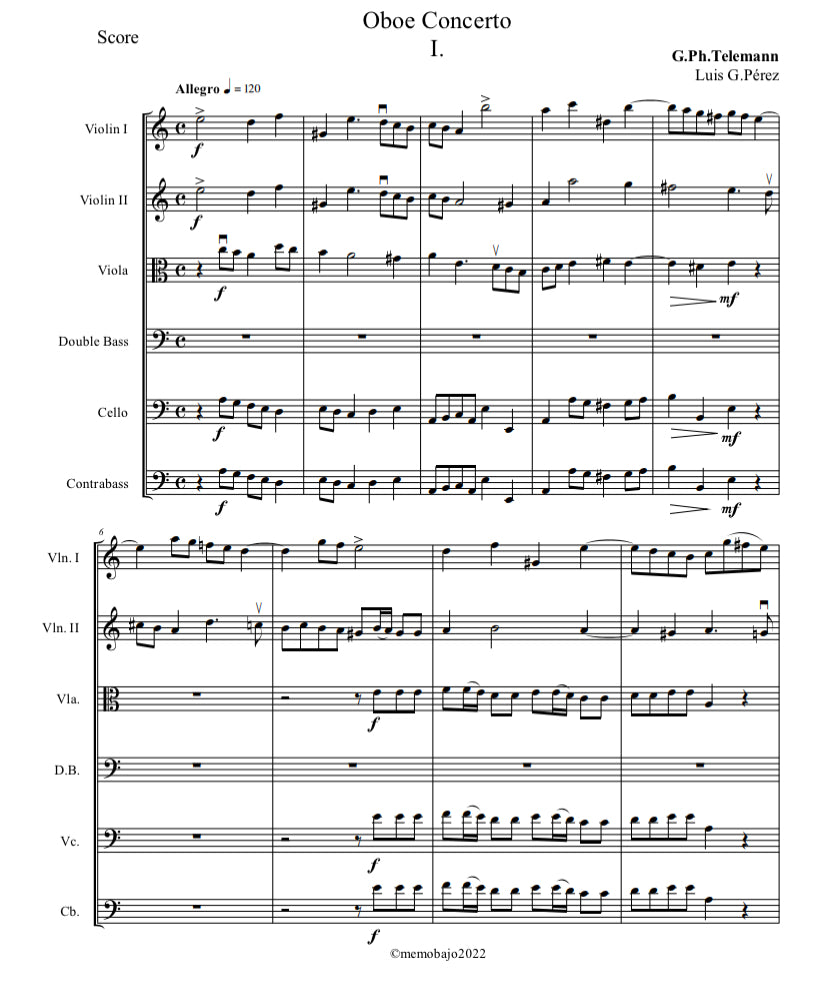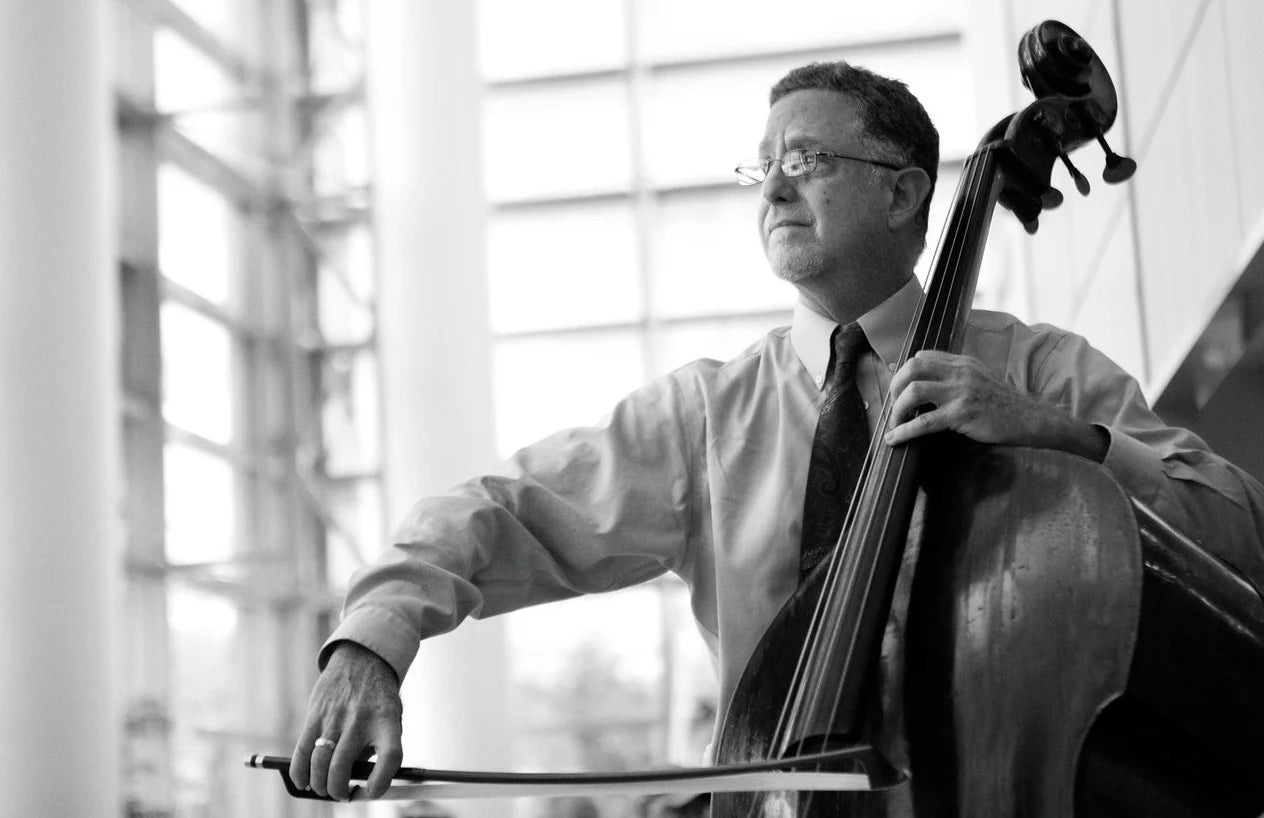Luis Peréz
Telemann: Oboe Concerto in F minor TWV 51:f1 for double bass and string quintet (arr. by Luis G. Pérez)
Telemann: Oboe Concerto in F minor TWV 51:f1 for double bass and string quintet (arr. by Luis G. Pérez)
Couldn't load pickup availability
About the Composition
Telemann's oboe concerto in Fm is a clear example of Baroque concerts where there was a permanent dialogue between Orchestra and soloist, the Italian term "concertare" that translates dispute or discussion makes this music a permanent interest for both performing musicians and listeners.
Written between 1712 and 1721 (Frankfurt period) using the models or structures of Vivaldi's 3-movement concertos. Written for an intermediate level of bassist, the first Allegro begins with a fugue of a theme of 2 and a half bars passing through all the voices
until the entrance of the Double Bass only in the anacrusa of the 18th bar, letter A. The second movement Largo e piano, reminds us of a Sicilian song, in this transcription for Double Bass solo and string quintet (string orchestra) to highlight the beautiful melody of the soloist the string whit Sordina and the accompanying Double Bass does
not play. The third movement Vivace is cheerful and optimistic music where the opening theme of the soloist is answered in the tutti of bar 9 with arpeggios of repeated notes that give personality to this movement.
About the Arranger (Wiki)
Telemann is one of the most prolific composers in history,[1] at least in terms of surviving oeuvre.[2] He was considered by his contemporaries to be one of the leading German composers of the time, and he was compared favorably both to his friend Johann Sebastian Bach, who made Telemann the godfather and namesake of his son Carl Philipp Emanuel and to George Frideric Handel, whom Telemann also knew personally. As part of his duties, he wrote a considerable amount of music for educating organists under his direction. This includes 48 chorale preludes and 20 small fugues (modal fugues) to accompany his chorale harmonizations for 500 hymns. His music incorporates French, Italian, and German national styles, and he was at times even influenced by Polish popular music. He remained at the forefront of all new musical tendencies, and his music stands as an important link between the late Baroque and early Classical styles. The Telemann Museum in Hamburg is dedicated to him.







